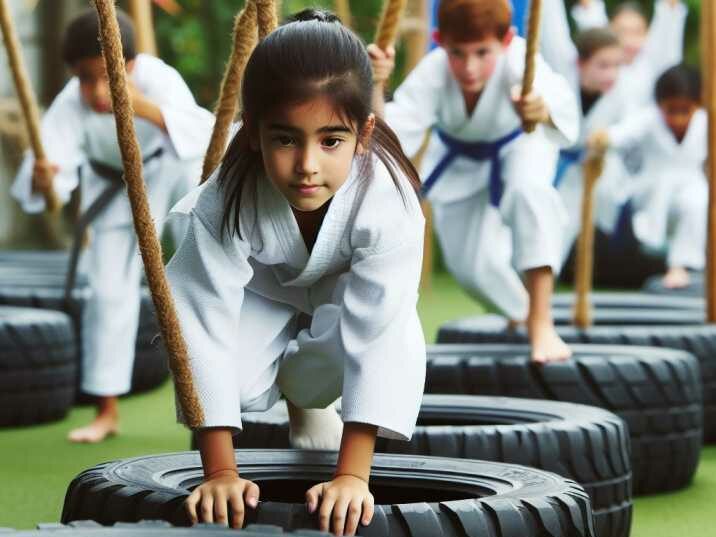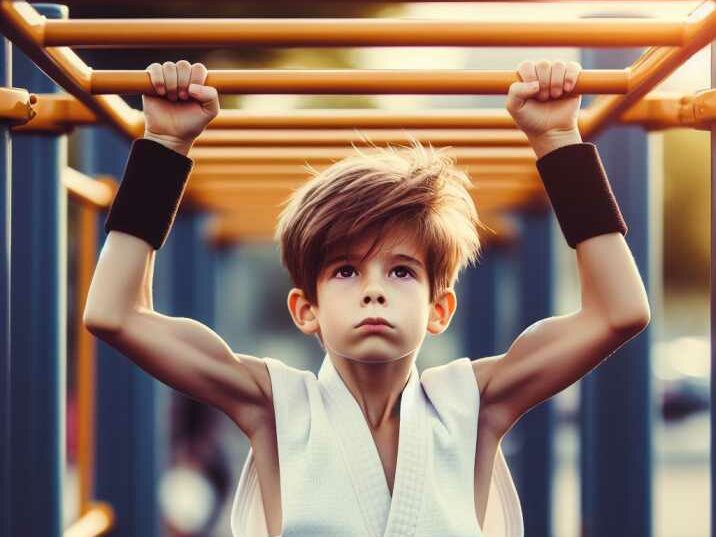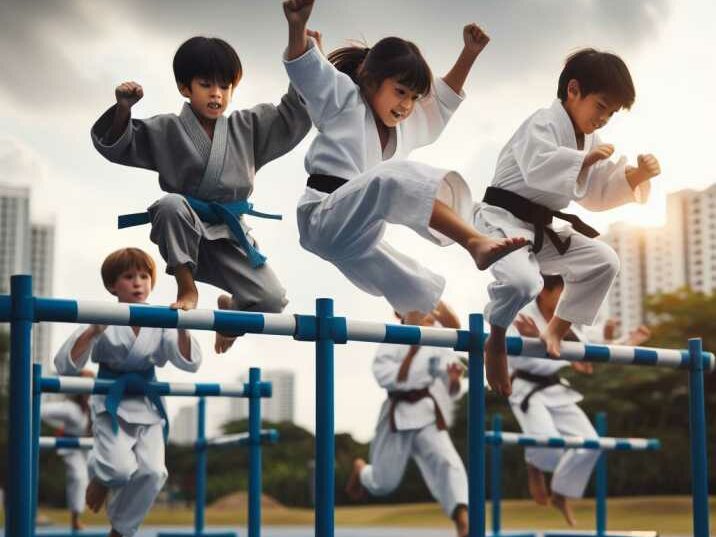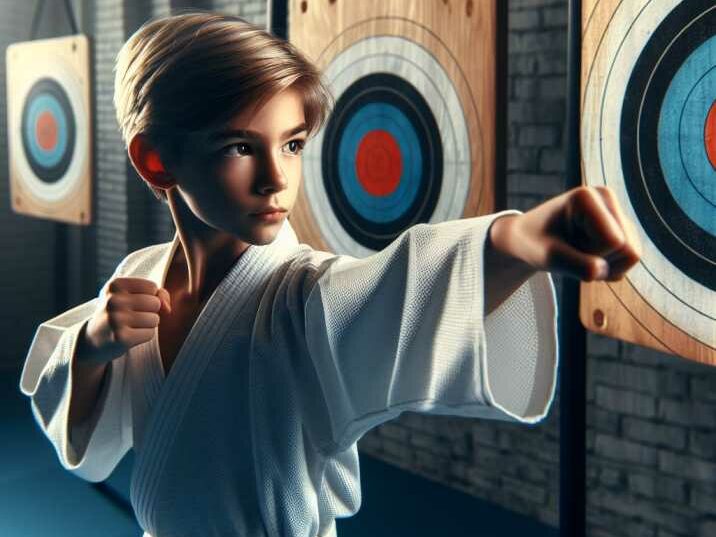Elements for Kids Martial Arts Obstacle Training
Table of Contents
Introduction:
In the dynamic world of children’s martial arts training, incorporating engaging and interactive obstacle courses adds a whole new dimension to their physical and mental development. These courses not only enhance agility and coordination but also make the learning process enjoyable. Let’s explore the top 10 elements for kids martial arts obstacle training that can elevate kids’ martial arts training to new heights.
Top 10 elements for kids martial arts obstacle training
Balance Beams: Mastering Equilibrium
The foundation of any martial art lies in balance, and what better way to cultivate it than with balance beams? These narrow structures encourage children to develop stability and focus, essential skills for any martial artist.
Tire Runs: Agility in Action
Tire runs are an exciting element that enhances agility and speed. By navigating through tires strategically placed on the course, kids improve their footwork and develop quick reflexes, crucial for effective martial arts techniques.

Monkey Bars: Building Upper Body Strength
Monkey bars are a classic yet effective obstacle for developing upper body strength. Kids swinging and traversing across these bars not only improve their grip but also enhance their overall strength, contributing to their martial arts prowess.

Hurdles: Overcoming Challenges
Hurdles symbolize the challenges one might face in martial arts and life. Jumping over hurdles not only enhances leg strength but also instills a sense of accomplishment, boosting a child’s confidence in their abilities.

Agility Ladder: Precision and Coordination
The agility ladder is a fantastic tool for enhancing footwork, precision, and coordination. By navigating through the rungs quickly and accurately, kids sharpen their movements, which is crucial for executing martial arts techniques with finesse.
Climbing Walls: Conquering Heights
Climbing walls introduce an element of adventure to the obstacle course. Scaling these walls builds both physical and mental strength, teaching kids the value of perseverance and conquering obstacles – an invaluable lesson in martial arts and life.
Tunnels: Spatial Awareness
Tunnels add an element of surprise and challenge to the course. Crawling through them not only improves flexibility but also enhances spatial awareness, a skill essential in martial arts for understanding opponents’ movements and maintaining a strategic advantage.
Reaction Ball Station: Reflex Enhancement
The reaction ball station is designed to improve reflexes and hand-eye coordination. By bouncing a ball off designated targets, kids enhance their reaction time, a crucial skill in martial arts for countering opponents’ moves effectively.
Rope Climbs: Strengthening Core Muscles
Rope climbs are excellent for building upper body strength and strengthening core muscles. This element adds a touch of adventure while providing kids with the physical conditioning necessary for mastering martial arts techniques.
Target Stations: Precision Striking
Target stations focus on precision and accuracy. Kids can practice striking designated targets with kicks and punches, honing their martial arts techniques and ensuring they develop the necessary precision for effective self-defense.

Conclusion:
Integrating elements for kids martial arts obstacle training not only makes the learning process enjoyable but also enhances physical and mental skills crucial for martial arts mastery. From balance beams to target stations, each element serves a specific purpose in fostering a well-rounded martial artist. As kids navigate through these courses, they not only build strength and agility but also cultivate discipline, focus, and perseverance – qualities that extend far beyond the training mat and into every aspect of their lives.
FAQs
Q: Why is it beneficial to include obstacle courses in kids’ martial arts training?
A: Obstacle courses add an element of fun to training while enhancing agility, balance, and coordination, key components of martial arts development.
Q: Are these obstacle course elements suitable for all age groups?
A: Yes, the elements can be adapted based on the age and skill level of the children, ensuring a safe and challenging experience for all participants.
Q: How do balance beams specifically contribute to martial arts training?
A: Balance beams help develop stability and focus, foundational skills in martial arts that improve a child’s overall technique.
Q: What role do target stations play in martial arts training?
A: Target stations focus on precision and accuracy, allowing kids to practice and refine their striking techniques with kicks and punches.
Q: Can these obstacle courses be set up at home, or are they only for martial arts studios?
A: Many of these elements can be adapted for home use, promoting physical activity and skill development in a safe environment.
Q: How do obstacle courses contribute to the mental development of children?
A: Obstacle courses promote problem-solving, discipline, and perseverance, fostering mental resilience that extends beyond martial arts training.
Q: Are these courses suitable for children with varying levels of physical fitness?
A: Absolutely. Obstacle courses can be modified to accommodate different fitness levels, ensuring inclusivity and a positive learning experience for all.
Q: What safety measures should be taken when incorporating obstacle courses into martial arts training?
A: Supervision, proper equipment, and age-appropriate challenges are essential. Safety should always be a priority during these activities.
Q: How can parents encourage their children to engage with these obstacle courses at home?
A: Parents can participate, make it a family activity, and emphasize the enjoyable aspects of the obstacle course to motivate children.
Q: Do these courses only benefit physical aspects, or do they also contribute to character development?
A: Beyond physical benefits, obstacle courses teach valuable life skills such as teamwork, discipline, and resilience, fostering holistic character development in children.

